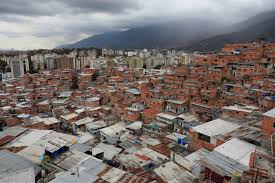Exploring Urban Privilege and Discontent in Mexico City
Recent protests in Mexico City have stirred attention worldwide, highlighting the underlying issues of urban inequality. Residents took to the streets, voicing their frustrations with chants like “Gringo, go home,” primarily targeting the rise of foreign expats and digital nomads.
While it may be tempting to attribute the unrest solely to the influx of tech-savvy workers pushing up rents and displacing locals, the reality is far more complex. Gentrification, a process in which wealthier individuals move into lower-income areas, has roots deeper in historical and socioeconomic factors affecting Latin American cities.
The Urban Shift Over Time
Historically, Latin America has undergone significant shifts in urbanization. In 1950, only about 40% of the population lived in cities. By 1990, that number surged to 70%, and current estimates indicate around 80%. Projections suggest nearly 90% by 2050, making Latin America one of the most urbanized regions globally. Such rapid change has attracted tourists, investors, and, more recently, remote workers seeking a vibrant locale.
In many cases, gentrification leads to the redevelopment of long-standing neighborhoods, often framed within the lens of “innovation corridors” and “creative districts.” While these developments may enhance economic potential, they also frequently undermine the social fabric of local communities, provoking resentment and loss of cultural identity.
Case Studies of Gentrification
Examples include the transformative impact of urban transit solutions. Improved public transport access has revitalized communities but also ignited property speculation, raising prices and displacing long-time residents. In Colombia’s Medellín, for example, neighborhoods such as Comuna 13 have experienced such pressures following the introduction of integrated transit systems, highlighting the fine line between accessibility and affordability.
Furthermore, gentrification can commodify a city’s essence. This process has been termed “touristification,” where urban culture and heritage are transformed into marketable assets for visitors, sometimes to the detriment of local traditions and living standards. Barranco, a burgeoning cultural hub in Lima, Peru, exemplifies this trend, where the community’s artistic spirit has been co-opted for commercial gain, threatening its authentic identity.
Structural Issues Behind the Unrest
Protests related to gentrification should not be viewed in isolation. Academic research underscores that these demonstrations reflect a broader landscape of inequality within Latin American cities. Limited access to quality education and formal employment has left many residents vulnerable to displacement pressures.
In cities like Cartagena, the legacy of colonialism continues to influence segregation and stratification. Historical inequities have paved the way for modern disparities, with marginalized groups relegated to under-resourced areas, often exacerbated by gentrification. Decisions regarding urban planning frequently favor affluent interests, leading to the preservation of colonial sites while neglecting poorer communities.
Understanding Urban Informality
Informality plays a pivotal role in the region’s urban landscape. A significant portion of the workforce operates without job security or social protections. High levels of informal employment and the resulting economic volatility are deep-seated issues intertwined with urban development. The dynamic where rising living costs push informal workers further into financial hardship forms a vicious cycle that the current system struggles to address.
A Look Toward the Future
The future of urban development in Latin America remains uncertain, yet it holds promise. Addressing the historical and structural issues illustrated by current unrest will be critical in redefining the relationship between local residents and the wave of newcomers seeking opportunities in these vibrant cities.
As urban areas continue to evolve, developing a nuanced approach to tourism and urban integration will be vital. Look no further than the resilience of communities advocating for their right to shape the contours of their cultural landscapes amidst external pressure.
الخاتمة
Latin America boasts a rich tapestry of urban life that continues to evolve as it attracts international attention. As the dynamics of gentrification play out, it’s crucial to balance development and the needs of local residents. Each protest echoes a call for equity in the face of change, underscoring the necessity for comprehensive policies that address both urban revitalization and social cohesion.
In coastal and urban areas where sailing and yachting are popular, understanding these socioeconomic factors enriches the experience of visitors and residents alike. For those interested in exploring these vibrant locales, موقع GetBoat.com serves as an international marketplace for renting sailing boats and yachts, ideal for discovering the beauty of Latin America’s coastlines while engaging with its culture and community.


